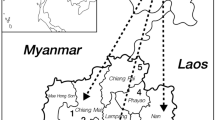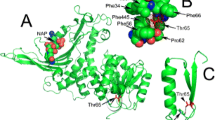Abstract
Glucose 6-phosphate dehydrogenase is a highly polymorphic enzyme encoded by a human X-linked gene (Xq2.8). This enzyme catalyses the first step of pentose phosphate pathway, that converts glucose 6-phosphate to 6-phosphogluconate with production of NADPH2. G6PD deficiency is the most common human metabolic inborn error affecting more than 400 million people world wide. The main clinical manifestations are acute hemolytic anemia and jaundice, triggered by infection or ingestion of Fava beans or oxidative drugs. A predominant variant of G6PD named Mediterranean is often associated with favism. This has been evident in several countries including Northern coastal provinces of Iran. Other current variants are Chatham and Cosenza. Molecular identification of the most prevalent mutations in G6PD gene was carried out in 71 males and females with G6PD deficiency. They were from Iranian Northern province of Golestan. DNA was extracted from blood samples and analyzed for known G6PD mutation by PCR and restriction fragment length polymorphisms (RFLP) technique. Adapting this method, revealed that Mediterranean mutation at nt 563 (C→T) is predominant in the area (69%) and 26.7% of patients have Chatham mutation at nt 1003 (G→A). Findings indicate a higher prevalence of these mutations, in Golestan compared to Mazandaran (66.2% Mediterranean and 19% Chatham mutation) and Gilan (86.4% Mediterranean and 9.71% Chatham mutations). Cosenza mutation at nt 1376 (G→C), by PCR-RFLP technique was not found among other 3 samples (4.3%). The similarity of these results with mutations in Italy indicates probable existence of a common ancestral origin in the observed populations.
Resumen
La glucosa-6-fosfato deshidrogenasa (G6PD) es una enzima muy polimórfica codificada en el humano por un gen ubicado en el cromosoma X (Xq2.8). La enzima cataliza el primer paso de la vía de la pentosa fosfato, que convierte la glucosa-6-fosfato en 6-fosfogluconato con producción de NADPH2. La deficiencia en G6PD es el error metabólico congénito mas frecuente en los humanos, afectando a mas de 400 millones de personas en el mundo. Las principales manifestaciones clínicas son anemia hemolítica aguda e ictericia, provocada por infección o ingestión de habas o de productos oxidativos. Una variante muy frecuente de G6PD Ilamada Mediterránea se asocia a menudo con favismo, como se ha encontrado en diversos paises y en las provincias costeras del norte de Irán. Otras variantes son Chatham y Cosenza. En este trabajo, se ha realizado la identificación molecular de las mutaciones mas prevalentes del gen de la G6PD en 71 varones y mujeres con deficiencia en la enzima procedentes de la provincia norteña iraní de Golestan. A partir de ADN extraído de muestras de sangre, se analizó para mutaciones conocidas del gen mediante las técnicas de PCR y RFLP (polimorfismo de restricción de longitud polimórfica). Los resultados mostraron que la mutación en el nucleótido 563 (C→T) es predominante en el área (69%) y que el 26,7% de los pacientes presentan la mutación Chatham en 1003 (G→A). Ello indica una mayor prevalencia de estas mutaciones en Golestan en comparación con Mazandaran (66,2% mutación Mediterránea y 19% Chathman). La mutación Cosenza en 1376 (G→C) es muy poco frecuente (4,3%). La similaridad de estos resultados con las proporciones de las mutaciones encontradas en Italia sugieren la probable existencia de un origen ancestral común.
Similar content being viewed by others
References
Amein, K.-A., Ali, Z. H., Al-Mustafa, Mohammed, A.-M., Foad, Q. and Suad, A.-A. (2002):Clin. Chem. Lab. Med.,40, 814–816.
Beutler, E., Kuhl, W., Gelbart, T. and Forman, L. (1991):J. Biotechnol. Chem.,266, 4145–4150.
Beutler, E. (1994):Blood,84, 3613–3636.
Beutler, E. (1993):Am. J. Haematol.,42, 53–58.
Ching-Shan, H., Kun-Long, H., May-Jen, H., Yi-Ching, L., Te-Hui, L. and Tang, K. (1996):Am. J. Hum. Hematol.,51, 19–25.
Hua-ling, C., May-Jen, H. and Ching-Shan, H. (1996);Hum. Hered.,46, 201–204.
Mesbah-Namin, S. A., Sanati, M. H., Mowjoodi, A., Mason, P. J., Vulliamy, T. and Noori-Daloii, M. R. (2002):Brit. J. Haematol.,117, 763–764.
Mesbah-Namin, S. A., Sanati, M. H., Mowjoodi, A., and Noori-Daloii, M. R. (2000):J. Sci. I. R. Iran,11, 285–288.
Najmabadi, H. (1981):PNAS,78, 5081.
Noori-Daloii, M. R., Hajebrahimi, Z., Najafi, L., Mohammad-Ganji, S., Sadeghizadeh, M. and Sanati, M. H. (2003):J. Sci. I. R. Iran.,14, 327–331.
Rovirta, A., Vulliamy, T., Pujades, M. A. and Vives-Corrons, J. (1995):Brit. J. Hematol.,91, 66–71.
Saad, S. T. O., Salles, T. S. I., Helena, M., Carvalno, M. and Costa, F. (1997);Hum. Hered.,47, 17–21.
Vigetto, G. and Montanaro, V. (1990);Ann. Hum. Genet.,54, 1–15.
Author information
Authors and Affiliations
Corresponding author
Rights and permissions
About this article
Cite this article
Noori-Daloii, M.R., Najafi, L., Ganji, S.M. et al. Molecular identification of mutations in G6PD gene in patients with favism in Iran. J. Physiol. Biochem. 60, 273–277 (2004). https://doi.org/10.1007/BF03167073
Received:
Issue Date:
DOI: https://doi.org/10.1007/BF03167073




